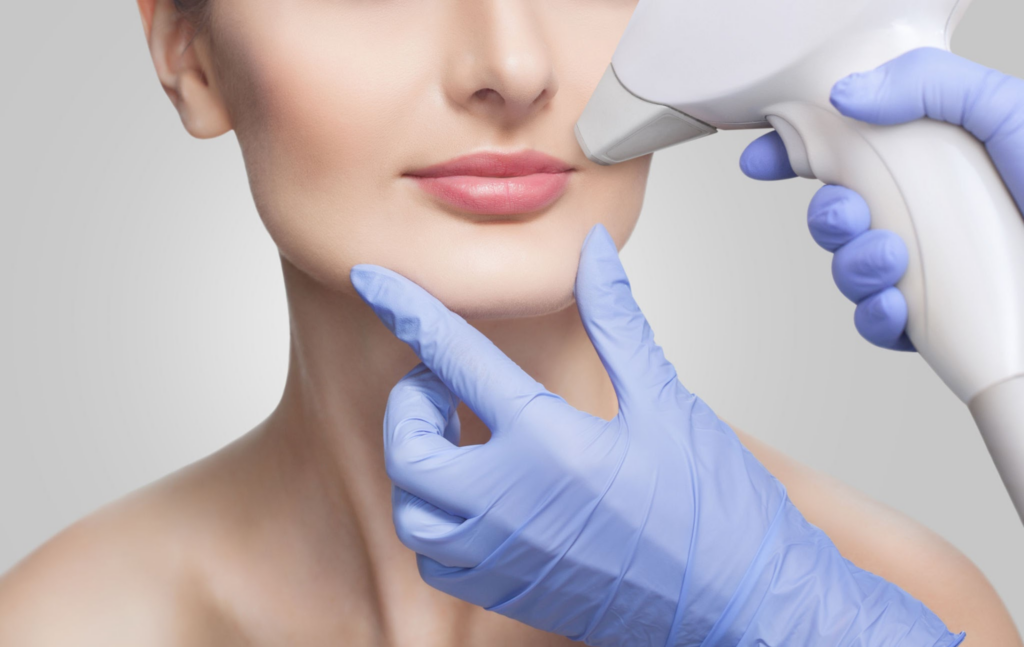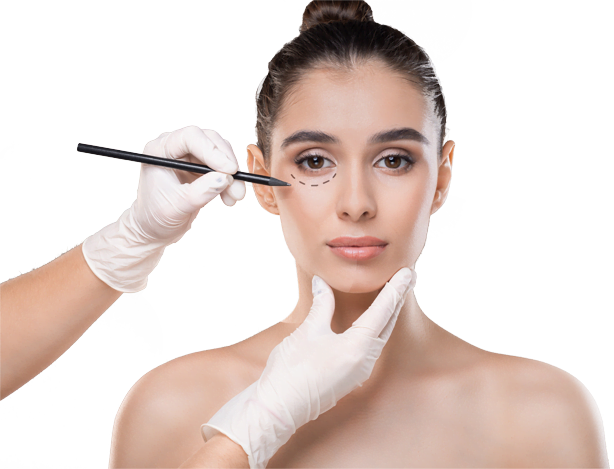Facial Feminization Surgery (FFS) is a life-changing journey for many. It’s all about sculpting facial features to bring out a more feminine appearance. Now, one crucial thing that significantly impacts FFS results is, you guessed it, facial hair removal! Getting rid of that pesky facial hair well in advance can truly make a world of difference. Think of it like prepping a canvas before a masterpiece; a smooth, hair-free face allows for the surgeon to work their magic more effectively. Let’s dive into the nitty-gritty of when and how to tackle facial hair removal before your big day.
Table of Contents
Understanding Facial Hair Growth
First things first, let’s understand how that fuzz on your face even grows in the first place. Just like the grass in your backyard, facial hair goes through cycles, and knowing these cycles is key to effectively getting rid of it.
The Hair Growth Cycle
Picture this: your hair follicle is like a tiny factory, constantly producing hair. This production happens in distinct phases:
- Anagen (Growing Phase): Imagine the factory working overtime, churning out hair like crazy! This phase is where the hair is actively growing, and it’s the best time to target it for removal. Why? Because the hair is connected to the root, making removal more effective.
- Catagen (Transition Phase): The factory slows down production, taking a bit of a breather. The hair follicle shrinks, and the hair detaches from the root.
- Telogen (Resting Phase): Time for a siesta! The hair follicle chills out, and the old hair hangs out until it eventually sheds, making way for a new hair to grow.
Understanding these phases helps determine the best facial hair removal approach.
Factors Affecting Hair Growth
Just like our lives, hair growth isn’t always straightforward. Several factors can influence how quickly (or slowly!) your facial hair decides to sprout.
- Hormones: Think of hormones as the conductors of your body’s orchestra. They play a significant role in hair growth. For instance, higher levels of androgens (typically thought of as “male” hormones, though everyone has them) can lead to more hair growth.
- Genetics: Ever wonder why your siblings might have different hair growth patterns? Genetics plays a role! Your genetic makeup, passed down from your family, influences hair color, thickness, and even growth rate.
- Age: As we journey through life, our bodies change, and so does our hair growth. Hormonal shifts, especially during puberty and menopause, can cause hair growth to fluctuate.
Now that we’ve demystified the world of facial hair growth let’s explore the weapons in our arsenal for facial hair removal!

Facial Hair Removal Methods
Each facial hair removal method has its own set of pros and cons. It’s a bit like choosing the right tool for a job. You wouldn’t use a hammer to screw in a lightbulb, would you?
Electrolysis
This method is like the precise sharpshooter of the hair removal world. Electrolysis uses a tiny needle to zap each hair follicle with an electrical current, effectively destroying it.
Pros:
- Permanent Results: Say goodbye to those pesky hairs for good!
- Effective for All Hair Types: Whether you have fine, coarse, light, or dark hair, electrolysis can tackle it.
Cons:
- Time-Consuming: Since each hair is treated individually, it can take multiple sessions, especially for larger areas.
- May Cause Discomfort: Some people experience a mild stinging sensation during the treatment.
Laser Hair Removal
Imagine a laser beam zapping away those unwanted hairs! That’s precisely what laser hair removal does. It uses concentrated light to target and damage hair follicles, inhibiting future growth.
Pros:
- Faster Than Electrolysis: Laser hair removal can treat a larger area in a shorter time.
- Long-Lasting Results: While not always permanent, laser hair removal can significantly reduce hair growth.
Cons:
- Not Suitable for All Hair Colors: Laser hair removal works best on dark hair and light skin. It might not be as effective on light blonde, red, or gray hair.
- May Require Multiple Sessions: Like electrolysis, multiple sessions are usually needed for optimal results.
Waxing (and Other Temporary Methods)
Sometimes, you need a quick fix! Waxing, tweezing, and depilatory creams fall under the category of temporary hair removal methods.
Pros:
- Quick and Easy: These methods can remove hair quickly, making them convenient for touch-ups.
- Relatively Inexpensive: Compared to electrolysis or laser hair removal, these options are more budget-friendly.
Cons:
- Short-Lived Results: The hair grows back, often within a few weeks.
- Can Cause Skin Irritation: Some people experience redness, bumps, or ingrown hairs after waxing or using depilatory creams.
Timing Facial Hair Removal for FFS
Okay, now for the million-dollar question: when is the best time to start facial hair removal before FFS?
Recommended Timeline
Ideally, starting your facial hair removal journey as early as possible is like giving yourself a head start. Most surgeons recommend beginning at least 6 months to a year before your scheduled FFS procedure. This timeframe allows for multiple treatments, targeting hair follicles in different growth phases.
Factors to Consider
Remember, everyone’s journey is unique, and what works for one person might not work for another. Here are some key factors to keep in mind when planning your facial hair removal timeline:
- Hair Growth Rate: If you have faster hair growth, you might need to start earlier or schedule more frequent treatments.
- Desired Surgical Outcomes: Talk to your surgeon about your specific goals for FFS. They can advise on how facial hair removal can enhance the results.
- Patient Preferences: Ultimately, the decision on when to start facial hair removal rests with you. Consider your comfort level, budget, and lifestyle when making this decision.
Managing Discomfort and Maintaining Results
Pain Management Tips
Let’s face it, hair removal, especially on the face, can be a tad uncomfortable. But fear not, brave warrior! Here are some tips to minimize discomfort:
- Over-the-Counter Pain Relievers: Popping an ibuprofen or acetaminophen an hour before your treatment can help take the edge off.
- Numbing Creams: These creams, available over-the-counter or by prescription, can temporarily numb the area, making the treatment more bearable.
- Cold Compress: Applying a cold compress to the treated area can help reduce redness and soothe the skin.
Post-Treatment Care
Think of your skin as a delicate flower that needs extra TLC after hair removal. Here’s how to pamper your skin:
- Gentle Cleanser: Use a mild, fragrance-free cleanser to wash the treated area. Avoid harsh scrubs or exfoliants, as they can irritate the skin.
- Moisturizer: Keeping the skin hydrated is crucial after hair removal. Apply a gentle, fragrance-free moisturizer to prevent dryness and irritation.
- Sun Protection: The sun can be harsh on sensitive skin, especially after hair removal. Apply sunscreen with an SPF of 30 or higher daily, even on cloudy days.
Long-Term Results
The longevity of your facial hair removal results depends on several factors, including the method used, your hair growth cycle, and hormonal influences.
- Electrolysis: Since this method destroys the hair follicle, it offers permanent results. However, occasional touch-ups might be needed for hormonal changes or stubborn hairs.
- Laser Hair Removal: While not always permanent, laser hair removal can significantly reduce hair growth, with results lasting for several months to years. Maintenance treatments can help prolong the results.
- Waxing and Other Temporary Methods: These methods provide temporary results, with hair typically growing back within a few weeks.
Conclusion: When is the Best Time to Start Facial Hair Removal Before FFS?
Remember, the journey to a more feminine appearance is personal and unique for everyone. Facial hair removal can play a significant role in achieving your desired FFS results. The best time to start this journey is as early as possible, ideally 6 months to a year before your scheduled surgery. This timeframe allows for multiple treatments, targeting those pesky hairs in different growth phases. Always consult with experienced healthcare providers and your FFS surgeon to create a personalized plan that aligns with your individual needs, goals, and timeline.
We hope that this article has provided you with useful information and solutions to your problems, and has inspired you to pursue your dreams and goals. If you have any questions, comments, or feedback, please feel free to contact us or leave a comment below. We would love to hear from you and to help you in any way we can. Thank you for reading and have a wonderful day!
Follow our blog for more. You can also reach us on our contact page for any questions you may have. Ffs center is an LGBT community friendly organization.

